Your computer features top-rated components. This chapter provides details about your components, where they are located, and how they work.
Right side
Use the illustration and table to identify the components on the right side of the computer.
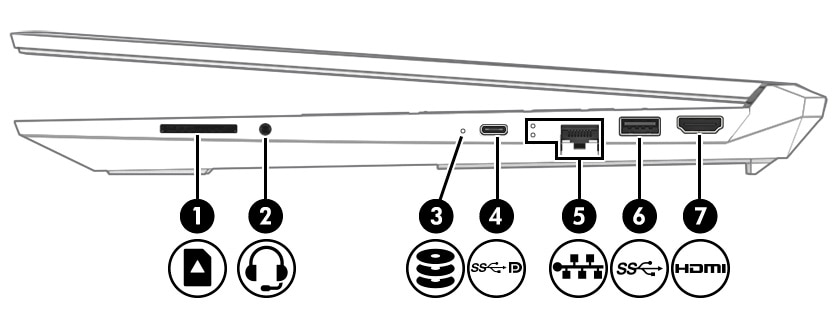
|
Component
|
Description
|
||
|
(1)
|

|
Memory card reader
|
Reads optional memory cards that enable you to store, manage, share, or access information.
To insert a card:
To remove a card:
|
|
(2)
|

|
Audio-out (headphone)/Audio-in (microphone) combo jack
|
Connects optional powered stereo speakers, headphones, earbuds, a headset, or a television audio cable. Also connects an optional headset microphone. This jack does not support optional standalone microphones.
warning: note: |
|
(3)
|

|
Drive light
|
|
|
(4)
|

|
USB Type-C SuperSpeed port and DisplayPort™ connector
|
Connects a USB device, provides high-speed data transfer, and (for select products) charges small devices when the computer is on or in Sleep mode.
note: - and -
Connects a DisplayPort device that has a USB Type-C connector, providing display output.
|
|
(5)
|

|
RJ-45 (network) jack/status lights
|
Connects a network cable.
|
|
(6)
|

|
USB SuperSpeed port
|
Connects a USB device, provides high-speed data transfer, and (for select products) charges small devices when the computer is on or in Sleep mode.
|
|
(7)
|

|
HDMI port
|
Connects an optional video or audio device, such as a high-definition television, any compatible digital or audio component, or a high-speed High-Definition Multimedia Interface (HDMI) device.
|
Left side
Use the illustration and table to identify the components on the left side of the computer.
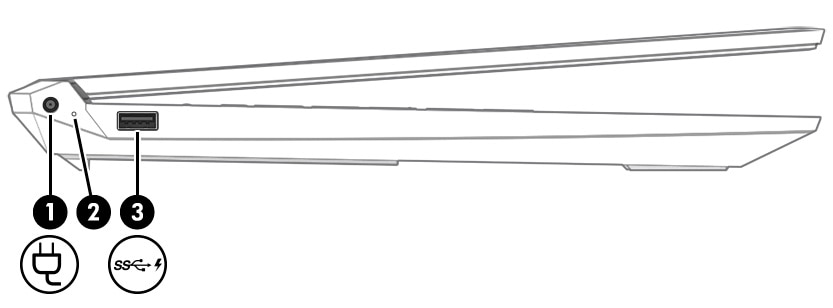
|
Component
|
Description
|
||
|
(1)
|

|
Power connector
|
Connects an AC adapter.
|
|
(2)
|
AC adapter and battey light
|
|
|
|
(3)
|

|
USB port with HP Sleep and Charge
|
Connects a USB device, provides data transfer, and charges small devices, even when the computer is off.
|
Display
The computer display can include essential components such as speakers, antennas, cameras, and microphones.
Low blue light mode (select products only)
Your computer display is shipped from the factory in low blue light mode for improved eye comfort and safety. Also, blue light mode automatically adjusts blue light emissions when you are using the computer at night or for reading.
warning:To reduce the risk of serious injury, read the Safety & Comfort Guide. It describes proper workstation setup and proper posture, health, and work habits for computer users. The Safety & Comfort Guide also provides important electrical and mechanical safety information. The Safety & Comfort Guide is available on the web at http://www.hp.com/ergo.
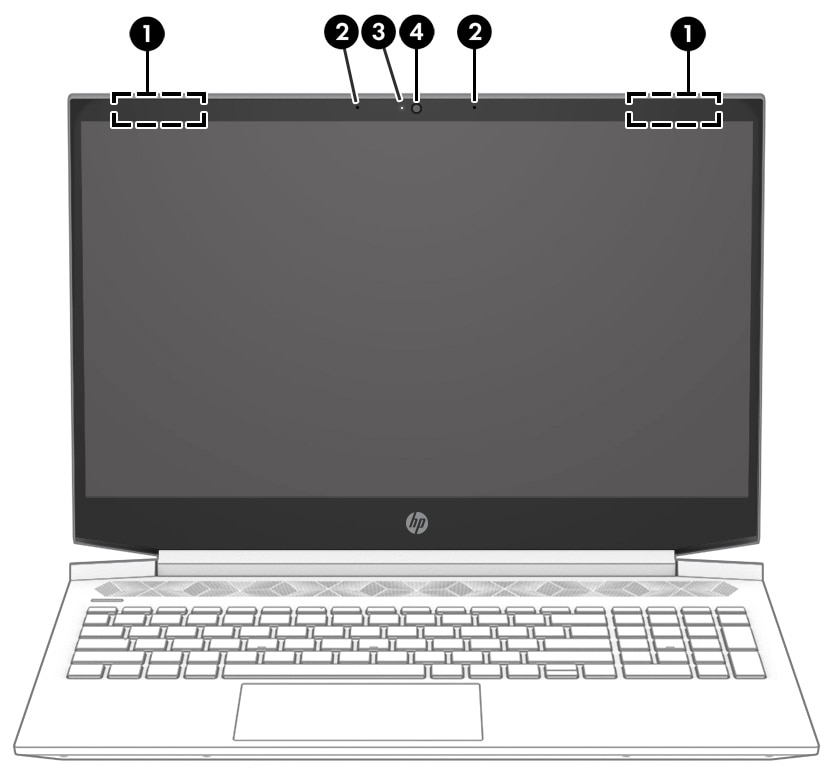
|
Component
|
Description
|
|
|
(1)
|
WLAN antennas*
|
Send and receive wireless signals to communicate with wireless local area networks (WLANs).
|
|
(2)
|
Internal microphones (2)
|
Record sound.
|
|
(3)
|
Camera light
|
On: The camera is in use.
|
|
(4)
|
Camera
|
Allows you to video chat, record video, and record still images. Some cameras also allow a facial recognition logon to Windows, instead of a password logon.
note: |
|
*The antennas are not visible from the outside of the computer. For optimal transmission, keep the areas immediately around the antennas free from obstructions.
For wireless regulatory notices, see the section of the Regulatory, Safety, and Environmental Notices that applies to your country or region.
To access this guide:
|
||
Keyboard area
Keyboards can vary by language.
Touchpad settings
Use the illustration and table to identify the touchpad components.
To adjust touchpad settings and gestures, or to turn off the touchpad:
-
Type touchpad settings in the taskbar search box, and then press enter.
-
Choose a setting.
To turn on the touchpad:
-
Type touchpad settings in the taskbar search box, and then press enter.
-
Using an external mouse, click the touchpad button.- or -
-
Press the Tab key repeatedly until the pointer rests on the touchpad button. Then press the spacebar to select the button.
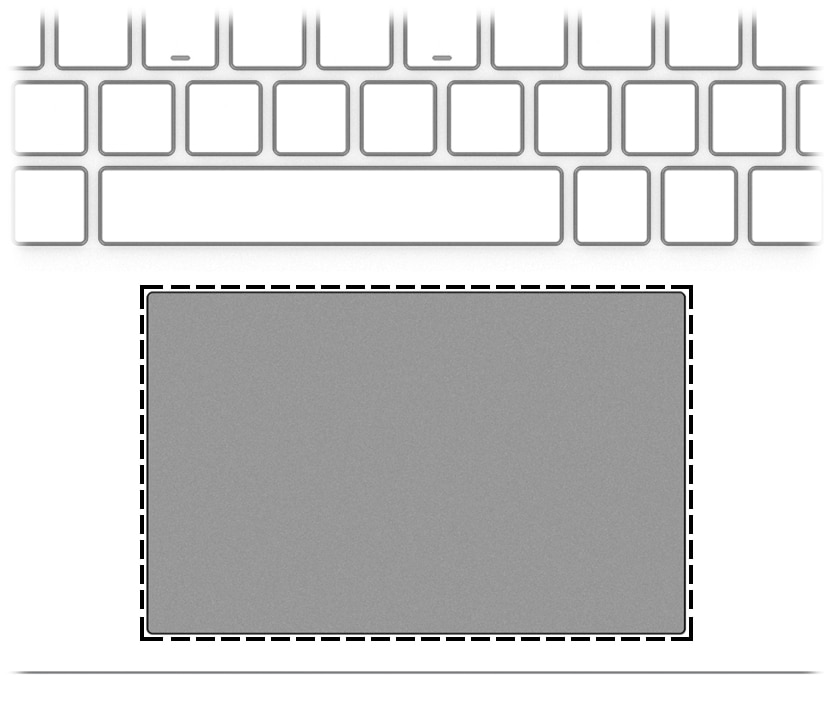
|
Component
|
Description
|
|
Touchpad zone
|
Reads your finger gestures to move the pointer or activate items on the screen.
|
Lights
Use the illustration and table to identify the lights on the computer.
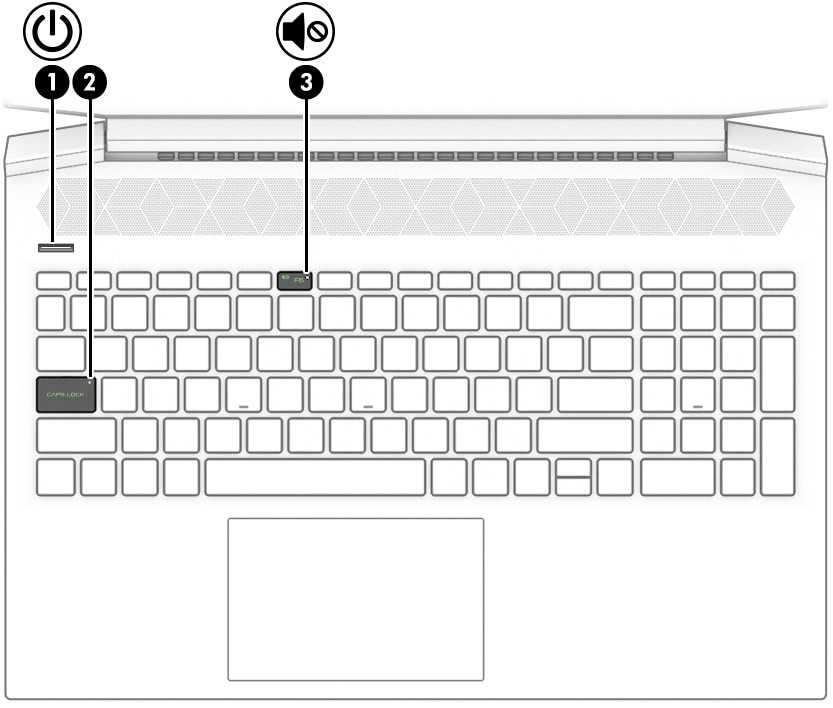
|
Component
|
Description
|
||
|
(1)
|

|
Power light
|
|
|
(2)
|
Caps lock light
|
On: Caps lock is on, which switches the key input to all capital letters.
|
|
|
(2)
|

|
Mute light
|
|
Button
Use the illustration and table to identify the computer button.
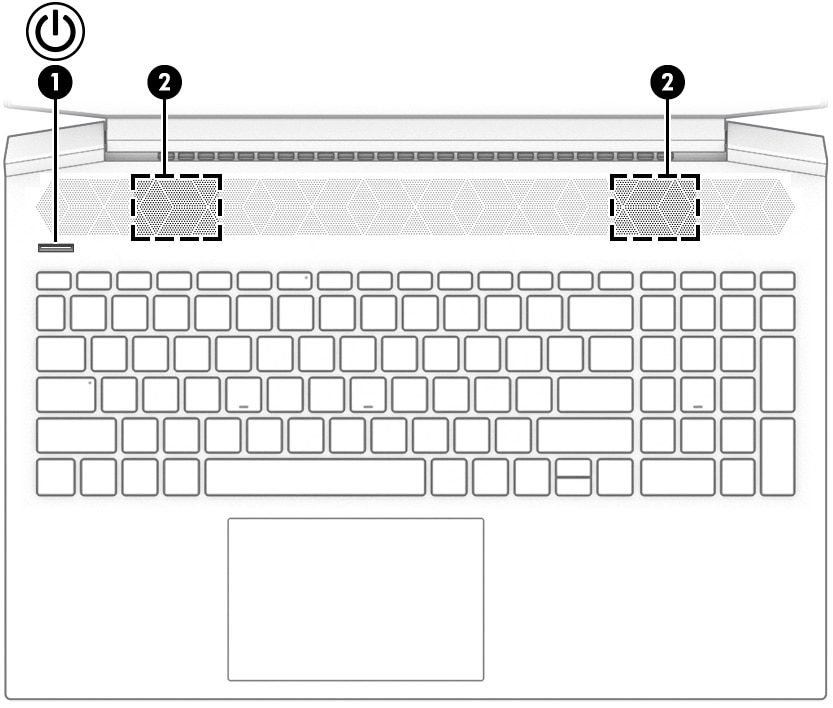
|
Component
|
Description
|
||
|
(1)
|

|
Power button
|
note: If the computer has stopped responding and shutdown procedures are ineffective, press and hold the power button down for at least 10 seconds to turn off the computer.
To learn more about your power settings, see your power options:
|
|
(2)
|
Speakers (2)
|
Produce sound.
|
|
Special keys
Use the illustration and table to identify the special keys.
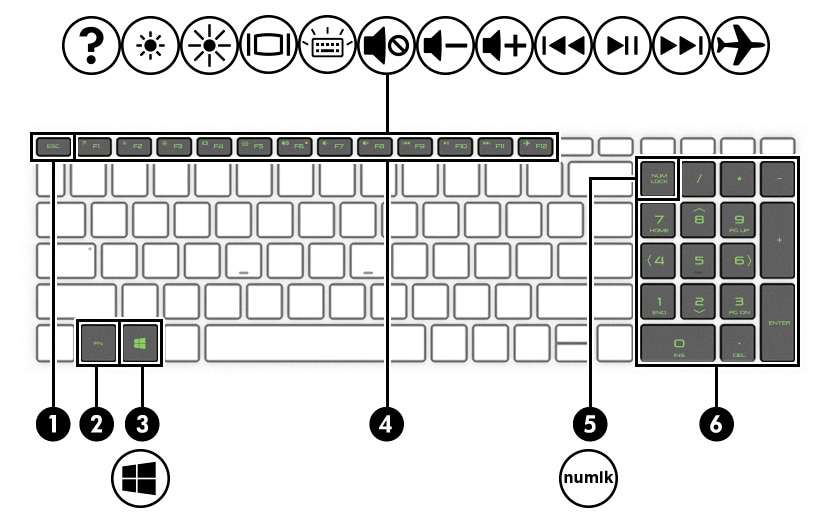
|
Component
|
Description
|
||
|
(1)
|
esc key
|
Displays system information when pressed in combination with the fn key.
|
|
|
(2)
|
fn key
|
Executes specific functions when pressed in combination with another key.
|
|
|
(3)
|

|
Windows key
|
Opens the Start menu.
note: |
|
(4)
|
Action keys
|
Execute frequently used system functions as defined by the icon symbols on f1 through f12 function keys.
|
|
|
(5)
|
num lock key
|
Alternates between the navigational and numeric functions on the integrated numeric keypad.
|
|
|
(6)
|
Integrated numeric keypad
|
A separate keypad to the right of the alphabet keyboard. When num lock is pressed, the keypad can be used like an external numeric keypad.
note: |
|
Bottom
Use the illustration and table to identify the bottom component.
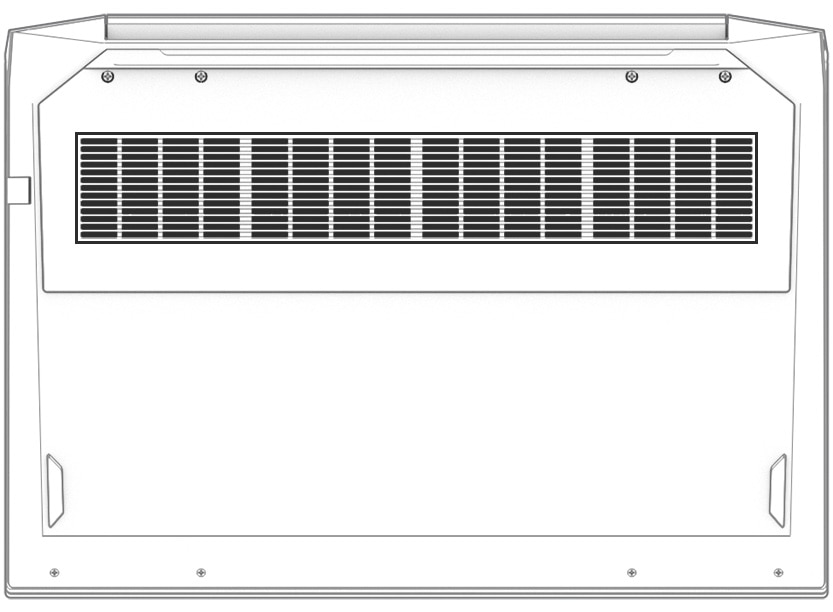
|
Component
|
Description
|
|
Vent
|
Enables airflow to cool internal components.
note: |
Rear
Use the illustration and table to identify the component on the rear of the computer.

|
Component
|
Description
|
|
Vent
|
Enables airflow to cool internal components.
note: |
Labels
The labels affixed to the computer provide information that you might need when you troubleshoot system problems or travel internationally with the computer. Labels can be in paper form or imprinted on the product.
note:Check the following locations for the labels described in this section: the bottom of the computer, inside the battery bay, under the service door, on the back of the display, or on the bottom of a tablet kickstand.
-
Service label—Provides important information to identify your computer. When contacting support, you might be asked for the serial number, the product number, or the model number. Locate this information before you contact support.Your service label information order may vary by country and might not include the wording "Model" due to the country regulation.
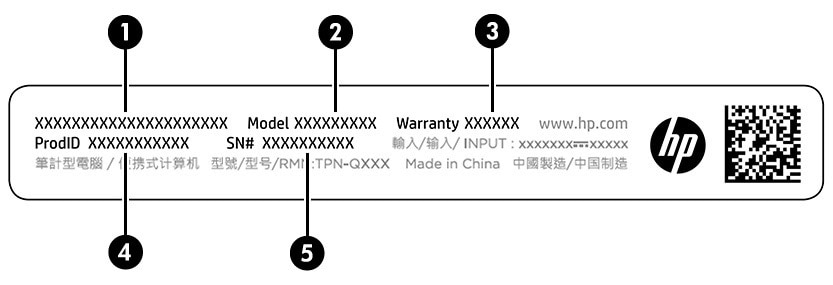
Service label components Component(1)HP product name(2)Model number(3)Warranty period(4)Product ID(5)Serial number -
Regulatory label(s)—Provide(s) regulatory information about the computer.
-
Wireless certification label(s)—Provide(s) information about optional wireless devices and the approval markings for the countries or regions in which the devices have been approved for use.
 , and then select
, and then select 